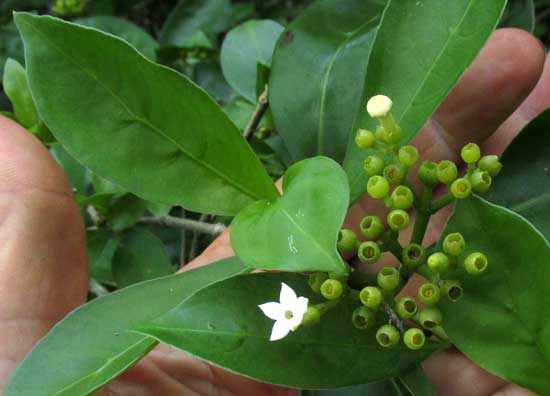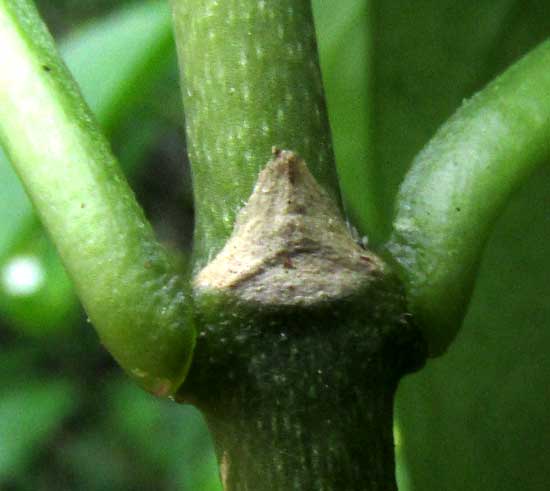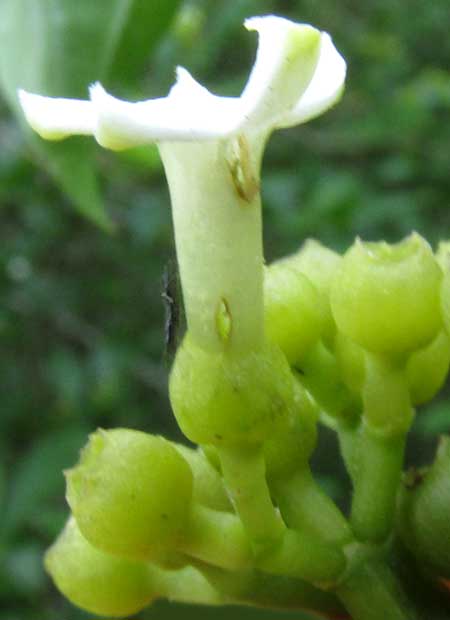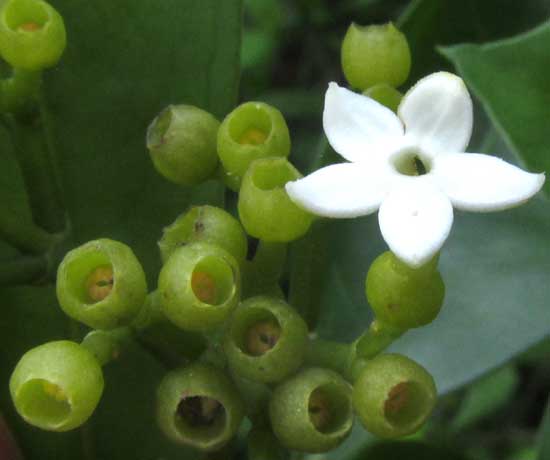Excerpts from Jim Conrad's
Naturalist Newsletter
from the July 23, 2017 Newsletter issued from Rancho Regenesis in the woods ±4kms west of Ek Balam Ruins; elevation ~40m (~130 ft), N20.876°, W88.170°; north-central Yucatán, MÉXICO
GOOD-SMELLING MARGARITOPSIS
For several days an exceptionally pleasant, spicy fragrance hinting of freshly grounds cinnamon and nutmeg suffused the air around the hut, but I couldn't find its source. A small tree or bush with small, white flowers was blossoming nearby, but I didn't even consider it as the source because its blossoms were so small. However, one day I took a closer look at that small tree, just to confirm that it was what I thought it was, and its little flowers were the source after all. Below, you can see a little of the plant, which otherwise was solidly embedded and mostly obscured in a wall of lush vegetation:

I'd assumed that the bush was a member of the large Coffee or Madder Family, the Rubiaceae -- whose field marks include opposite leaves connected at their bases by conspicuous stipules, and flowers with inferior ovaries. First I looked for those " interpetiolar stipules," and found some classic ones, shown below:

Now I checked for the inferior ovaries, and saw what's shown below:

Inferior ovaries are those situated beneath the calyx. In the above picture you see what looks like calyx sepals atop spherical, green ovaries, which would make the ovary inferior. However, look at what's shown below:

That picture shows a very typical Coffee-Family corolla, but, what in the last picture looked like green calyxes atop a spherical ovary turn out to be mostly empty, goblet-shaped calyxes. The ovaries lie in the goblets' bottoms and the corolla arises from atop that ovary, so it's still an inferior ovary, just inferior in a curious way. In botanical terms, such a goblet-shaped calyx is said to be "crateriform." The fragrant shrub wasn't what I thought it was, which was some kind of Psychotria; I'd not seen anything like this before.
It was MARGARITOPSIS MICRODON*, found in disturbed areas, dry forests an thickets from southern Mexico and the Caribbean area south to northern South America. It has no good English name, though in Spanish often it's called Crucetillo. However, that name is applied to so many different kinds of plants that it's a shame to use it.
This was a fine discovery -- a genus I'd never encountered, and a species that's memorable if only because of its wonderful odor.